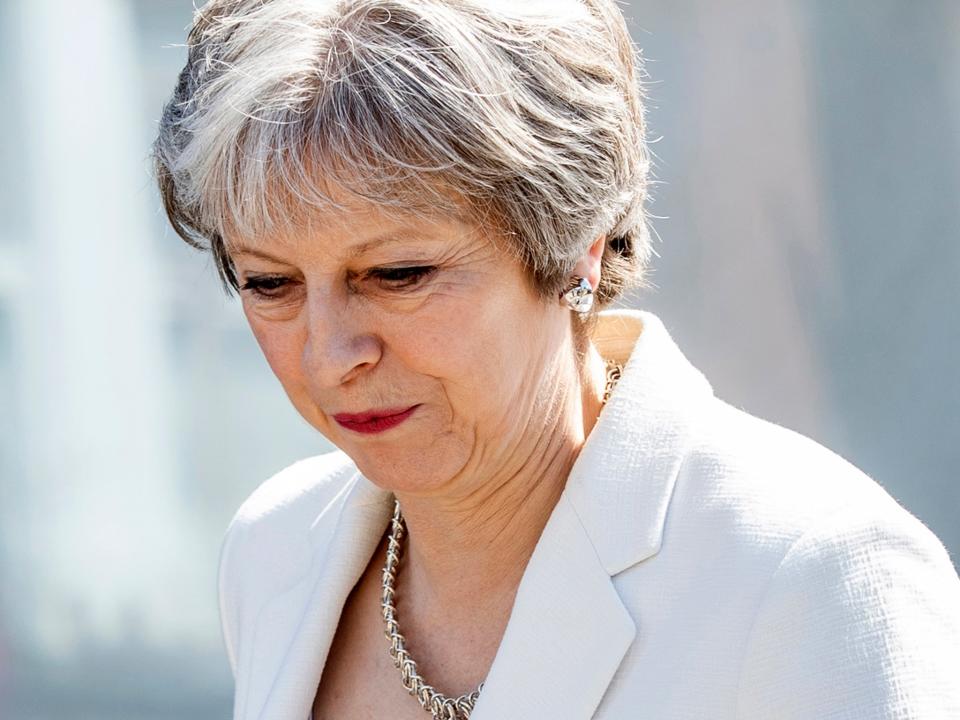Full Brexit set to take seven years as Theresa May seeks extra transition period
Theresa May is set to ask the European Union for an extra transition period that would see full Brexit delayed until around seven years after the vote to Leave.
Under the plans, briefed by government officials to The Times newspaper, the whole of the United Kingdom would stay aligned with EU regulations and customs procedures until 2023 to help avoid a hard border in Ireland. It comes on top of a two-year transition period from 2019 to the start of 2021 which has already been agreed.
The latest plan for a longer transition is intended as a replacement for the border “backstop” agreed by negotiators in December under which the UK would “maintain full alignment” with the single market if no other solution could be found, to remove the need for border checks.
Despite having been agreed in theory, that earlier policy now faces opposition from both the DUP and Brexiteers in the Cabinet – but for different reasons, and the UK Government now says it is “unacceptable” and will come up with new proposals.
The new plan, expected to be unveiled by the Government in early June, is extremely unlikely to be looked on favourably by Brussels – which says the backstop cannot be time-limited and must apply only to Northern Ireland.
The old “backstop” agreed in December originally looked like a done deal, but is now being interpreted in such different ways by the EU and UK that it is again a major barrier to concluding a withdrawal agreement.
Whatever backstop is agreed, it now looks increasingly likely to come into play on the Northern Ireland border – with no other solution to the customs conundrum on the horizon.
If it is necessary, it will be in a very limited set of circumstances for a limited time.
Theresa May commenting on the Northern Ireland backstop earlier this week
If agreed, the new plan would effectively extend the Brexit process to at least seven years. Sir Ivan Rogers, the UK’s old ambassador to the EU, was criticised after he advised ministers in 2016 that leaving the EU would take around 10 years. He stepped down from his post shortly after.
The EU says under the December agreement just Northern Ireland would stay in full alignment with the single market and customs union to prevent a hard border, while UK negotiators say they actually agreed that the whole UK would do so. The relevant text is somewhat ambiguous as to what was agreed.
EU officials do not want the backstop to apply to the whole UK because it would give Britain access to the single market without having to uphold the so-called “four freedom” or submitting to the European Court of Justice. The UK says it cannot accept the backstop only applying to NI because that would create a potential customs border between Great Britain and NI – which the DUP oppose. Theresa May has relied on the DUP for her majority in the House of Commons since she called an election and lost seats last year.
The time-limiting element has now been introduced by the UK because Cabinet Brexiteers like Boris Johnson fear that an indefinite backstop could be a backdoor way of keeping the UK aligned with the EU in perpetuity. Ministers have publicly confirmed that a time-limited backstop is on the way.
The Independent reported earlier this week that Commission officials were completely opposed to any time-limiting of the backstop. They say commitments already made by British negotiators in December – that the backstop would apply “unless and until” another solution is found – rule out a time-limit.
The UK’s transition is designed to give officials more time to come up with another solution to solve the border – but means there would be yet another cliff-edge.
A Government spokesperson did not deny the reports of the plan, only telling The Independent: “We're not going to be drawn on speculation – the PM has said we will bring forward our plans on the backstop shortly.”

 Yahoo News
Yahoo News 

